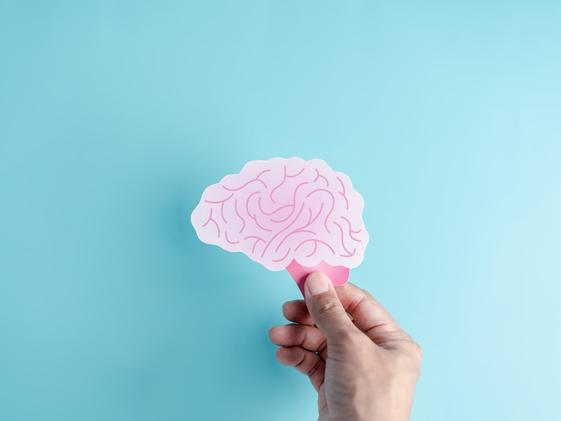
Neurodiversity-affirming education is key to supporting students into the creative industries
Not enough is said about the likely disproportionate number of neurodivergent people working in the creative industries, and this has real implications for how effective support is for creative students
There are three times more autistic people studying creative art and design subjects than students with no disability, recent research has shown. While autism is just one form of neurodivergence, other forms are often more prevalent. So, it stands to reason, that creative courses and institutions have significant numbers of neurodivergent students.
We urgently need more research into neurodivergence at the intersection of HE and the creative industries because standard systems, assumptions and processes do not take into account differences in the way neurodivergent people experience the world.
I write about this as someone who is autistic and has dyscalculia, and as someone who abandoned a once thriving art practice because I couldn’t make sense of the opaque systems and the obtuse hierarchies I was meant to intuitively navigate in the art world. It was these difficulties that led me from creative practice to creative employability education, where I shifted my focus to helping others unpack the complex systems that can make the creative industries inaccessible to all but the most privileged.
It’s important to define some of the language of neurodiversity, as I observe a lack of fluency that holds back meaningful discussion.
I will begin by saying neurodiversity refers to the naturally occurring variation in the ways humans experience the world. Neurodivergence, however, refers to a range of ways of experiencing the world that differ from what is considered typical or standard.
I am neurodivergent. I cannot be described as neurodiverse because no individual can be diverse. I’ve written about this in more detail elsewhere, with a particular focus on why getting this distinction right is an issue of social justice. For brevity, using the word neurodiverse when describing someone who is neurodivergent indicates an assumption that “diversity” means minority.
- Autism in academic settings: unleashing unique strengths with adjustments
- Supervising neurodivergent postgraduate researchers
- How to make your university more neurodivergent friendly
I’ll build on this further by clarifying that neuro does not mean brain but refers to the nervous system. For me, being autistic, in particular, is a full-bodied experience. I think, feel, sense, perceive and interpret the world differently. To place neurodivergence in the realm of a single organ is shortsighted. This is particularly the case when it comes to teaching and learning which, in Western contexts, often champions the brain as the sole site of learning. Teaching that overlooks the embodied experience of learning, will never result in truly neurodiversity-affirming practice.
Finally, I’ll further share that I define neurodiversity-affirming (neuro-affirming for short) teaching practice as one which attends to the needs and strengths of neurodiverse learners. That is, learning is accessible to all, without any one neurotype being privileged.
What does neuro-affirming teaching look and feel like?
There is a lot of good advice out there about practical adjustments that can make learning more accessible to neurodivergent learners. These tips often focus on tools, like voice-to-text software or wider considerations like sending slides and learning materials in advance. These are good tips, but I find myself advocating for more holistic considerations of neurodivergent experiences.
From my experience as a student, and an educator and in my role supporting others to develop their teaching practice, there are three shifts I would love to see happen.
Neuro-affirming teaching doesn’t interpret behaviour solely through a neurotypical lens
Most neurodivergent people have faced their fair share of criticism across their lifetimes, simply by showing up as themselves. This is because some behaviours are being interpreted through a neurotypical lens, when in fact the motivation and intent behind our behaviour can be quite different. So, I may be considered obstinate because I ask lots of detailed questions - not to challenge, but to make sure I have really understood something. Or I may undertake parallel activities to aid concentration when trying to learn. My fidgeting is not a sign of disinterest but a desire to focus. Or I may avoid eye contact, not because I’m ignoring you, but because it requires a significant amount of energy for me to maintain - energy I would rather redirect to learning.
Neuro-affirming teaching considers the bodily experience of learning
Many neurodivergent people experience differences in the way their bodies interpret sensory input. In my case, sitting under strong overhead lights for more than 15 minutes results in a burning, tingling sensation across my scalp that eventually settles into a prolonged migraine. Many of us also find the expectation of sitting on a hard chair for extended periods does not attend to the needs of our often hyper-mobile bodies. While teaching spaces cannot usually be controlled by teaching staff, regular movement and sensory breaks can support neurodivergent learners to meet their body’s needs, so they’re more readily able to learn.
Neuro-affirming teaching embeds a focus on social justice, activism and advocacy
Most people who have experienced discrimination as a result of their neurotype will be all too familiar with the exhausting process of advocating for themselves. Making the systems and processes at play in the creative industries transparent, including inequitable access and poor working practices, will support these students to see these as problems of the system, rather than with themselves. Helping people frame their experiences through the lens of social justice, encouraging them to question the status quo and building their confidence in, and awareness of, their strengths will support neurodivergent students to shape more equitable practice.
By centring neuro-affirming practice in teaching we will support more than just neurodivergent learners to thrive. All minoritised groups stand to benefit from support that allows them to express their authentic selves and meet the needs of their body and mind, all while learning to advocate for themselves. There are few spaces more inequitable than the creative industries so we must empower neurodivergent learners to be the changemakers the creative industries so urgently need.
Hannah Breslin is an educational developer (employability) at the University of the Arts London.
If you would like advice and insight from academics and university staff delivered direct to your inbox each week, sign up for the Campus newsletter.



